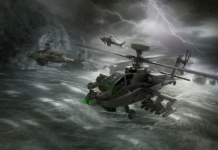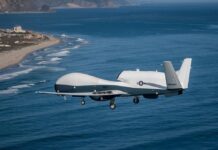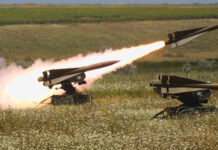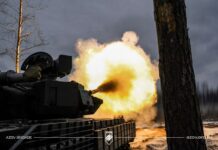The Russian invasion of Ukraine in February 2022 was supposed to be a campaign of rapid decision, operations were due to be concluded in a matter of days, with the end result being the collapse of the Ukrainian state, its government, and its military forces. At this point Russia would have established a client regime Kyiv, while absorbing Luhansk and Donetsk in the Donbas and changing the border situation in Eastern and Southern Ukraine to suit its purposes. However, things did not go according to plan.
As we now know, the assumptions that the Russian operational plan was based upon were totally incorrect. Clearly, the capabilities of the Russian military to successfully carry out the strategic mission and operational fundamentals as set out in their campaign plan were seriously overrated. Having misjudged their own capabilities, Russian commanders were equally deficient in their appreciation of the capabilities of the Ukrainian military, the resilience of the Ukrainian political leadership and the Ukrainian people’s will to fight.
On paper, the combat power and materiel superiority of Russia in the land, sea and air domains were obvious. This should have translated into Russian forces being in possession of so many advantages that it appeared inconceivable, at the least to their commanders and planners, that they could fail to achieve their objectives rapidly. Yet not for the first time in military history, there was a massive difference between the ‘perfect’ world of the plan and the harsh reality of combat operations.

Now, many months later, there are a number of lessons to be drawn from combat in Ukraine across so many areas of military operations. In this article our intention is to look at tube artillery primarily in the context of the Ukrainian Land Forces, although limited reference will be made to the artillery situation of the Russian Army. Our starting point will be to look at the artillery systems available to Ukraine prior to the first Russo-Ukrainian conflict in the Donbas which commenced in 2014, before moving on to the current conflict and its transformation of Ukrainian artillery capabilities. Lastly, we will examine operational lessons that can be drawn from the present conflict.
Artillery in Ukraine – The Beginning
With the collapse of the Soviet Union and the emergence of an independent Ukraine in 1991, one of the first steps taken by the Ukrainian government was the establishment of national military forces. What had become Ukrainian national territory was, in the Soviet era, one of the most significant centres of Soviet military power, meaning that an enormous amount of military equipment and stores had come under the control of the newly-independent Ukraine.

The 2S1 Gvozdika 122 mm self-propelled gun is one of the major artillery systems for the Ukrainian Land Forces, both Poland and the Czech Republic have supplied 2S1 systems since the start of the conflict. Poland has been a major source of supply for Soviet calibre ammunition. (Photo: Ukrainian Land Forces)
Ukraine was to be the victim of political and economic instability all of the way through the 1990s, which saw the emergence of an oligarch class and increasing corruption problems. As far as the Ukrainian military was concerned, the main problem was a lack of funds. There was no shortage of equipment, but there was little point in having all of this equipment if you could not use it. Ukraine also had a significant defence industrial capability, but there were problems here as well, they needed to reorganise to reflect the realities of the post-Soviet economic and political situation, and also needed funding to survive through a time where spending on domestic defence in Ukraine was minimal.
All in all, it was a difficult set of circumstances for the Ukrainian military and defence industry to operate within. Ukraine had complied with the force reductions mandated by the Treaty on Conventional Armed Forces in Europe (CFE), and as a part of this process a large volume of equipment was scrapped. Despite this, Ukrainian territory still held a vast quantities of equipment of all natures, including an immense amount of ammunition and large spares holdings for Soviet equipment. Inevitably, it was recognised that all of this could be monetised, and Ukraine became a major force in the sale of surplus equipment.
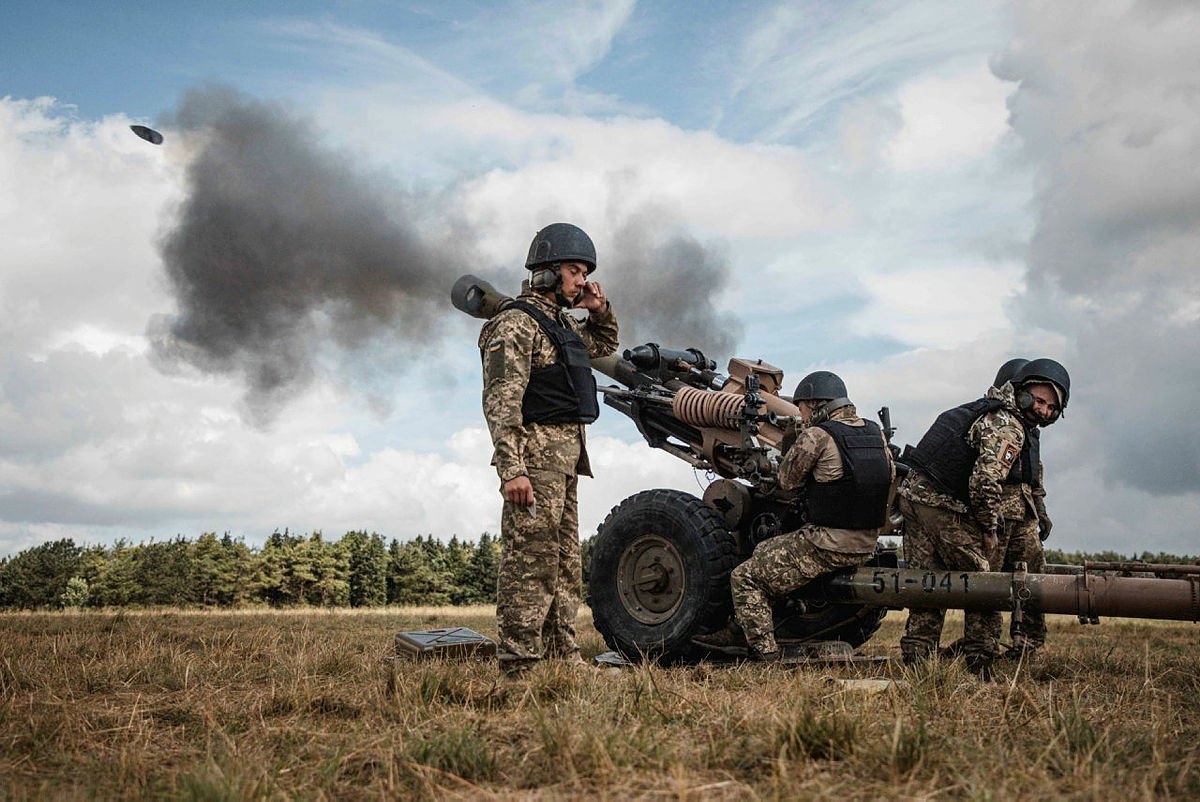
Australian Army L119 gun systems were retired, subsequently purchased and ended up in the Ukraine, courtesy of the British government, thus far some 80 guns have been supplied. The US has supplied their version of the system, the M119, with 36 guns and 180,000 rounds of ammunition being supplied. (Source: Ukrainian Land Forces)
The Stockholm International Peace Research Institute (SIPRI) Arms Transfers Database provides a reasonable idea of the number of towed and self-propelled howitzers (SPHs) sold by Ukraine between 2000 and 2014:
Ukraine was also a major source of artillery ammunition for these countries and others, with Afghanistan and Iraq also thought to be major ammunition customers, with the US paying for the acquisition process. However, even the sale of 164 self-propelled howitzers (SPHs) and 210 towed artillery systems of various types outlined above, along with substantial quantities of ammunition, hardly made a dent in the Ukrainian Land Forces’ artillery inventory. In many respects Ukraine had more tube artillery than it could actually use, and consequently much of the equipment was left in storage, while other systems were left to rust.
By 2014 and the start of the first Russian military aggression against Ukraine, which saw the seizure of Crimea and the start of what became the War in the Donbas, the Ukrainian Land Forces had a diverse range of towed and self-propelled artillery systems to call upon.
Towed systems included the T-12/MT-12 Rapira 100 mm smoothbore anti-tank gun, which is primarily used in the direct fire support role, although it does have a secondary anti-armour mission. Also present, though not in significant numbers, was the 2B16 Nona-K, a 120 mm gun/mortar system, along with its self-propelled version, the 2S9. The D-30 122 mm howitzer was available in significant numbers, despite the fact that many had been sold. The M-46 130 mm Field Gun was also in the Ukrainian inventory, but was not deployed in large numbers, as 152 mm artillery systems were preferred. These 152 mm systems provided the majority of Ukrainian towed artillery firepower, and the key systems in service were the D-20 152 mm gun, the 2A36 Giatsint-B 152 mm howitzer and the 2A65 Msta-B 152 mm howitzer.
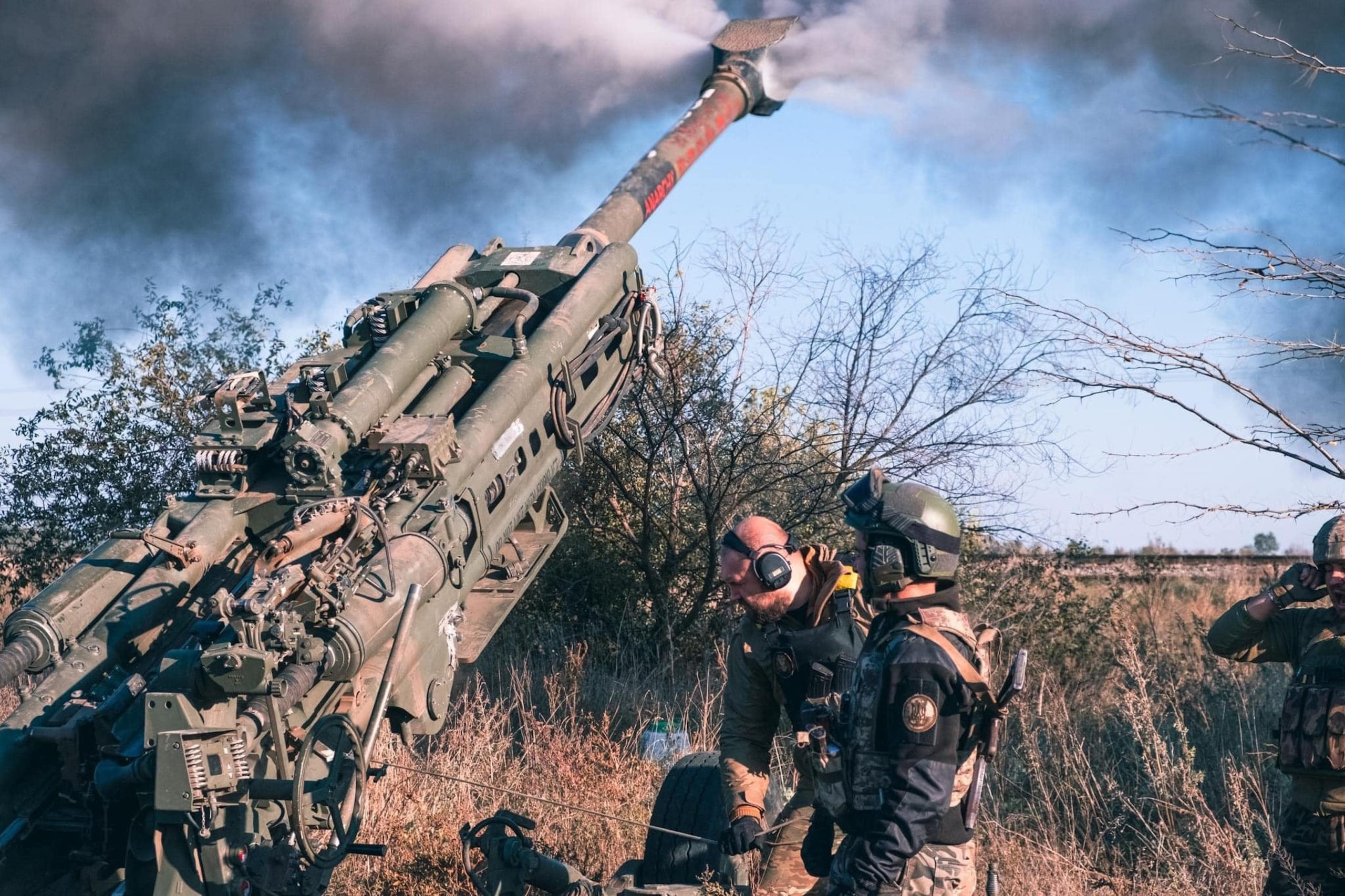
Turning to self-propelled (SP) systems, the 2S1 Gvozdika 122 mm howitzer and the 2S3 Akatsiya 152 mm gun were the two most numerous SP artillery systems available to the Ukrainian Land Forces, with some 250 of each in service. There were a limited number of 2S5 Giatsint-S 152 mm gun systems in service, as well as a few 2S7 Pion 203 mm gun systems. In fact, there were over 80 2S7 systems in Ukraine, but the majority of these were in storage and had to be rapidly restored to operational condition once the conflict in the Donbas broke out. Also present were some 60 2S9 120 mm gun/mortar systems.
Lessons From the First Phase in the Donbas
The initial phase of operations in the 2014 Russian assault on Ukraine saw significant tactical and operational innovation on the Russian side, something that was seriously lacking in Russian operations during the 2022 invasion of Ukraine. Significantly, in the war in Donbas, UAV systems were used for target acquisition and real-time engagement, with targets acquired and engaged within 15 minutes, usually by Russian Multiple Launch Rocket Systems(MLRS).

As regards conventional artillery, the first phase in the Donbas showed that ammunition consumption was far higher than anticipated, running at 300 to 400 rounds per tube, per day. Fortunately, high-intensity combat was not sustained on a regular basis, there were peaks and troughs of combat activity. However, the longer the conflict went on, the more ammunition was being used and once the conflict went beyond 12 months, even the large ammunition stocks that the Ukrainians had started with were running low. Russian special operations forces also targeted major Ukrainian ammunition storage locations in the strategic depth of Ukraine and successfully destroyed large stocks of artillery ammunition, further worsening the ammunition supply situation.
Reports from the Donbas indicated that as much as 85% of the casualties suffered were caused by artillery fire. It is important to note that MLRS systems where particularly important in this first phase in the Donbas, especially when Russian forces used rockets with submunition payloads. However, conventional artillery also had a critical role to play.
Both sides used the 2S1 Gvozdika SPH in direct fire missions, Russian forces used the system to suppress targets in support of advancing troops, like an old-fashioned assault gun. For the Ukrainians the 2S1 was used to bolster anti-tank defences, since its 122 mm armament could take out heavily-armoured targets. For the Ukrainians another critical area was counter-battery fire. Prior to the conflict, many of their longer-range tube artillery systems were in storage, but the need for counter-battery missions saw the rapid return of systems such as the 2A36 Giatsint-B, 2S5 Giatsint-S, and 2S7 Pion. Russian forces also started to place more emphasis on counter-battery missions as the conflict developed.
Other artillery trends seen were the dispersion of artillery systems, since traditional concentrated artillery positions were far too vulnerable. Related to this was the trend to attach artillery systems directly to lower-level formations, as this continued the policy of dispersion and also recognised the fact that battalion-sized units were operating across far greater areas than they would have traditionally. This was the foundation for the Russian Battalion Tactical Group (BTG), with its attached MLRS and tube artillery systems.
We have already mentioned the extensive Russian use of UAVs, to which Ukraine would respond by acquiring its own UAVs, but during the War in Donbas, they were less comprehensive than those of their opponent. Also widely used were artillery and mortar-locating radar systems, which, when used in conjunction with UAVs, greatly improved the responsiveness and accuracy of counter-battery fires. The importance of counter-battery fires was not simply down to neutralising targets, since even forcing hostile artillery to suspend their activities and redeploy was also considered to be a good use of resources.
There were many lessons to be learned from the initial stages of the war in the Donbas, one of the most significant was the importance of tube artillery. Unfortunately for Ukraine it was unable to add to its artillery capabilities in any significant manner, though under Ukraine Security Assistance Initiative, the US would supply 15 AN/TPQ-36 Firefinder artillery locating radars, which improved their counter-battery capabilities. However, in terms of actual artillery, the only acquisition of note came in 2018 and 2019, when Ukraine was able to acquire 56 2S1 Gvozdika SPHs delivered in two batches from the Czech Republic.

Certainly, Ukraine could have benefitted from the provision of substantial amounts of defence equipment from friendly nations during the War in the Donbas, but in reality it received very little. On the other hand, the training assistance that it received has helped stimulate cultural change in the Ukrainian military, helping it to transition from its Soviet roots to become a much more modern and flexible instrument. Its ability to adapt to changing circumstances presents a stark contrast to the relatively inflexible nature of Russian military operations in the current conflict.
It should also be remembered that Ukraine did not have the financial resources to significantly add to its military capabilities, what defence funding it could allocate had to be spent very carefully. There were some domestic artillery development efforts though, most notably the 2S22 Bogdana, which is a NATO-compliant 155 mm artillery system mounted on a Ukrainian AutoKrAZ KrAZ-63221 6×6 truck platform. The system was first displayed in 2018 and the single prototype reportedly successfully completed firing trials in January 2022. The single Bogdana system has apparently seen combat in the current conflict, but given the devastation suffered by Ukraine’s manufacturing sector, there seems little possibility that further such systems could be built.
The Current Conflict
The Russian invasion of Ukraine that commenced on 24 February 2022 was to be the final act in Russia’s effort to dismember the country and turn what remained into a client state. This was a process that started on 21 February 2014 with the annexation of the Crimea by Russia, and in March was followed by a separatist movement bursting into life in the Luhansk and Donetsk regions of the Donbas. By April 2014, separatists in both regions had declared themselves as ‘People’s Republics’ and, with Russian military support including troops and weapons, commenced military operations against the Ukrainian state.
When the current conflict broke out there were very few who expected Ukraine to survive, from Moscow’s perspective the February invasion was supposed to resolve Russia’s Ukraine problem in a matter of days. The fact that many months later Ukraine is still resisting, has recaptured much territory lost in the initial invasion and has inflicted humiliating reverses on Russian ground forces is a substantial achievement. Ukraine’s willingness and capability to provide sustained resistance was obviously not a factor that had been correctly calculated in Russian planning.
A crucial factor behind Ukraine’s ability to sustain resistance was that unlike in 2014, its plight was not ignored by the international community. This time Ukraine had international support, resulting in the supply of weapons, equipment, ammunition, training, finance and other means of support, allowing Ukraine to continue fighting and enhancing its ability to successfully conduct combat operations. Unlike during the War in the Donbas, where Ukraine was suffering from qualitative inferiority, all of this foreign assistance has given Ukraine qualitative equality in a few critical areas, and even superiority in some.
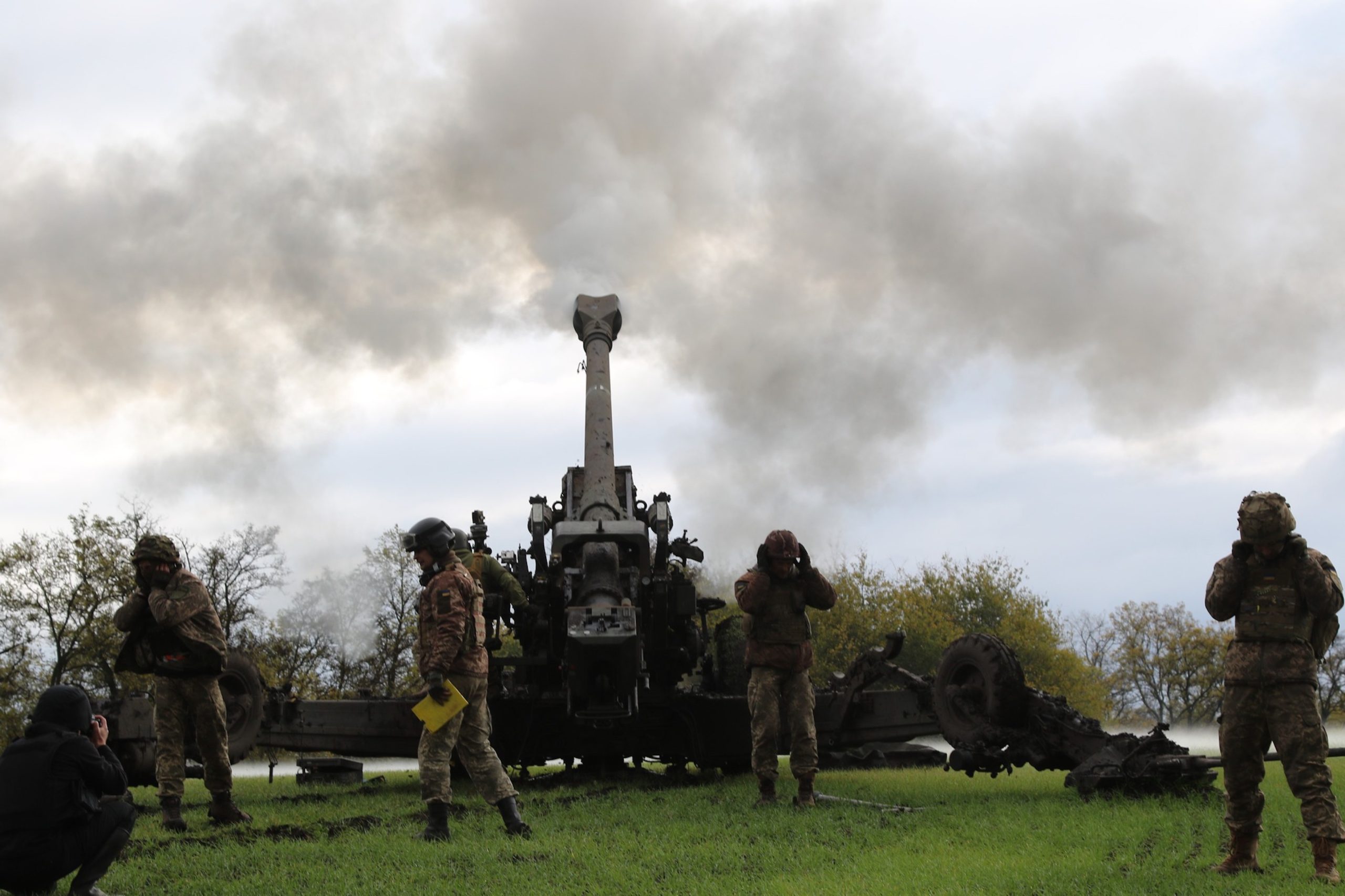
Foreign Artillery Assistance
Ukraine has received a host of different artillery systems from friendly nations, covering the whole tube artillery spectrum from obsolete, to obsolescent, to state-of-the-art. Equipment supplied includes artillery in old Soviet calibres already in service with Ukraine. Also received were towed and self-propelled systems in standard NATO 105 mm and 155 mm calibres, with new production self-propelled systems to be shipped in due course.
Dealing with Soviet calibre equipment first, the following have been notable transfers to the Ukrainian armed forces, but do not represent all received/obtained equipment:
Acquiring ammunition for these Soviet Calibre systems would normally not be that much of a challenge, obvious suppliers include Poland (Polish ammunition of this type is widely used in Ukraine), The Czech Republic and Slovakia amongst others, and the capture of Russian ammunition stocks. However, ammunition usage rates have exceeded expectations, meaning that securing other sources of supply has become necessary. For instance, Greece was able to supply 2,100 122 mm rounds. By mid-2022 though, Ukrainian government officials were stating that in the Donbas alone they were firing more than 6,000 artillery rounds per day and were in desperate need of more ammunition.
Meeting Ukrainian needs for Soviet calibre ammunition saw some unusual sources of supply enter the fray. In July, the British government declared that it would acquire 50,000 rounds of Soviet calibre ammunition for Ukraine, and it would appear that Pakistan was the source. In early August reports surfaced of RAF C-17 transport aircraft flying missions to Nur Khan airbase at Chaklala, near Rawalpindi in Pakistan. C-17 missions were conducted via either Cluj in Romania or RAF Akrotiri in Cyprus, in total there were 12 flights were over a 15 day period. The purpose was to transport Pakistan Ordnance Factories (POF) 122 mm HE natures with LIU-4 fuzes, and by the end of August, photo confirmation of Pakistani ammunition in Ukrainian service became available. Supplying this ammunition made great sense for Pakistan, it improved relations with Britain and the US, which was important as Pakistan was looking for a loan from the International Monetary Fund (IMF) and military equipment from the US, and POF itself, which was paid for the ammunition.
A more unexpected source of Soviet calibre ammunition was Iran. Bearing in mind that Iran has supplied Russia with UAVs (Mohajer-6; Shahed-129) and loitering munitions (Shahed-131; Shahed-136), the fact that Iranian artillery ammunition is being used against Russia came as something of a surprise. Supplying both sides in a conflict is not unknown, but initially there were suggestions that the OF-462 122 mm projectiles and their accompanying B-429E fuzes had originally been sent by Iran to their Houthi clients in Yemen before being intercepted on the way, with the seized ammunition sent to Ukraine.
More recently this explanation has become doubtful, with images of Iranian OF-462 packing crates in Ukraine and associated documentation indicating that the Iranian ammunition was manufactured in 2022, as well as the appearance of Iranian 152 mm rounds in Ukraine. It would therefore appear that Iran is seeing the conflict in Ukraine as a commercial opportunity, with both sides as customers.
Towards the end of November 2022, images surfaced on social media purporting to show Ukrainian domestically-produced 152 mm rounds. At present, it is unclear whether the rates of production are sufficient to meet Ukraine’s rates of ammunition expenditure, or how long Ukraine will be able to sustain production amid attacks on its energy infrastructure. However, this source should not be discounted as a possible means for Ukraine to sustain its own artillery.
One unexpected artillery ammunition story concerns Russia. Although they were credited with having vast ammunition stocks, the intensity of ammunition consumption nonetheless became a problem. This was compounded by the reported large amount of dud rounds being fired by Russian artillery, indicating improper storage and/or quality control problems in manufacturing. These problems should be resolved by newly manufactured ammunition, but this brought another set of problems to confront – that rates of use exceed manufacturing rates. The resulted in the Russia being in the unexpected position of having to acquire Soviet calibre ammunition on the international market.
According to the US, Russia has been successful in finding an artillery ammunition supplier in the form of North Korea, which has produced immense quantities of weapons and ammunition for the Korean People’s Army (KPA). Tube artillery forms a critical part of KPA capabilities and ammunition stocks are substantial. These deals are made easier by the fact there is a railway line running from Pyongyang to Vladivostok. Once it arrives in Vladivostok, ammunition can be placed on the Trans-Siberian Railway and shipped westwards or air freighted. It is unclear whether Russia is paying cash for the ammunition or a mixture of weapons, food and fuel.
There is of course one major supplier of both Soviet and Western calibre artillery ammunition that could rapidly respond to large requirements and that is China. It is very significant that Beijing has decided not to actively involve itself in Ukraine conflict. In fact, China is benefitting from the situation via deeply discounted Russia oil and increased Russian dependence on trade with China and access to Chinese finance.

Western Artillery Systems
The supply of artillery systems to Ukraine by the US and other Western nations has made a decisive contribution to Ukrainian firepower, in many cases offering performance advantages over Russian artillery systems. However, not all of the equipment supplied to Ukraine delivers qualitative advantages, and some system donations can be considered as no more than a gesture. Despite that, the range of tube artillery which has been made available to Ukraine is impressive, both in terms of size and diversity.
Looking first to towed artillery systems, the following have been delivered to Ukraine or are in the process of being delivered:
Notably, some of the systems listed are fairly obsolete by modern standards, with the most notable example being the M101 105 mm towed Howitzers, a model which was produced between 1941 and 1953. These would have little real battlefield utility, but may be useful for training purposes. In a similar vein, Portugal offered to supply five M114 155 mm towed howitzers, which also date back to WWII, however this latter offer was declined by Ukraine. More modern offerings include the FH70, TRF1, and the M777. These M777 guns have mostly been taken from US Marine Corps stocks as they move towards new operational concepts that reduce the need for armour and artillery.
These towed artillery systems have also been supplemented by large quantities of self-propelled artillery, with Ukraine having received or is in the process of receiving the following 155 mm SPHs:
While these have augmented Ukraine’s indirect fire capabilities, they have also faced challenges. A number of AHS Krab and M109 SPHs have been destroyed or heavily damaged already, along with smaller quantities of CAESAR 6×6, Zuzana 2, and PzH 2000. Notably, several of the losses can be attributed to the Lancet loitering munition, suggesting Russia is adapting its counter-artillery operations. Additionally, Ukrainian PzH 2000 crews tended to fire a large number of rounds on a continuous basis, leading to serviceability problems with the system, according to German media reports. Spare parts also seem to have not been available in sufficient quantities, reports from Ukraine suggesting that one PzH 2000 might have been cannibalised for spares. On the positive side, these harsh lessons have led towards the establishment of a support infrastructure for Ukrainian PzH 2000 systems. To this end, Krauss-Maffei Wegmann (KMW) are establishing a centre in Slovakia to provide repair and maintenance services, plus logistic support, for systems such as the PzH 2000.
Another potential self-propelled artillery system arrival in Ukraine is the BAE Systems Archer 155/52 mm 6×6 wheeled artillery system. The Swedish Army was asked to conduct a study to determine how many Archer systems could be transferred to Ukraine, without degrading Swedish artillery capabilities, and it concluded that 12 systems could be spared. It is now up to the recently elected Swedish government to decide if they will supply these Archer systems, in the meantime Sweden is providing military assistance to Ukraine, including ammunition.
These artillery transfers have been accompanied by large quantities of ammunition, however, the only clear data on artillery ammunition supplies to Ukraine come from the US, along with some limited information from Canada, Germany, and the UK. The following table summarises known quantity artillery ammunition transfers either completed or in progress as of late 2022:
Outside of these known quantities, various others have contributed ammunition. In terms of 105 mm ammunition, Lithuania, Spain, and the UK are understood to have contributed, while in terms of 155 mm ammunition, Canada (including M928 Excalibur rounds), Finland (TKR 88 rounds), Germany (including Vulcano 155 mm Extended Range and ‘SMart’ sensor-fuzed natures), Italy, Norway, Spain, and Sweden have all provided ammunition.
As such, 155 mm systems have grown in importance to become the key element of the Ukrainian Land Forces tube artillery capability. However, ammunition usage rates have been prodigious in Ukraine, causing alarm in the US as 155 mm ammunition stocks have been run down and current production is not enough to replenish expended stocks. According to the Center for Strategic and International Studies (CSIS): “In FY 2023, the United States only planned to buy 29,000 of the basic high explosive projectiles (M795). Surge capacity was 288,000 projectiles per year, though with a 48-month lead time.” Now it appears that plans are under consideration that would see monthly 155 mm production increase to 36,000 rounds, although reaching this production rate will take three years!
Once again artillery ammunition expenditure has been much higher than expected in a conventional conflict. It would therefore appear that either our ability to accurately predict rates of expenditure remains an inexact science, or that maintaining sufficient ammunition stocks has been institutionally deprioritised. It is obvious that without the US transfer of immense quantities of 155 mm ammunition, the course of this conflict could have been totally different. Obviously NATO members are going to have to do some serious thinking about the size of their artillery ammunition stockpiles once the lessons of the current conflict are analysed.

Lessons to Learn
There are many lessons that can be taken from the current conflict in Ukraine, in terms of sustaining the defence industrial base and in terms of actual combat operations. When the US starts worrying about the ability of its defence industrial base to restore stocks that have been depleted by transfers to Ukraine, there is a real problem. We have noted the issue of 155 mm ammunition stocks, but the problem is widespread, including FGM-148 Javelin missiles amongst other examples.
The US has traditionally been able to rely upon immense stocks of materiel in its possession, the fact that is apparently no longer the case is a major concern. Materiel shortages limit operational possibilities, which in turn reduces strategic options available to the US. It has taken Ukraine conflict to start the US thinking about sustaining production capabilities and having the ability to rapidly increase production capabilities. That is a positive development, however, the major negative is that it will take years to restore production capabilities in many critical areas.
If the US is suddenly becoming aware of critical equipment shortages that should be a warning for Europe, where many nations have been less than diligent in having appropriate ammunition and spare parts stockpiles. The rate of artillery ammunition usage in Ukraine should be a real lesson to European militaries and force them to seriously consider if their ammunition war stock numbers are truly adequate for combat operations. The same logic applies to more expensive, but more capable, guided rounds that are already only available in small numbers.
As regards artillery ammunition, some US studies lamenting the decline of US 155 mm ammunition stockpiles and the timescales required to increase ammunition production, have pointed to the fact that their European allies also manufacture 155 mm and that this could become another source of supply if required. Unfortunately, this fails to take into account that European militaries will also need to replenish their 155 mm stocks after transfers to Ukraine. Added to this, European industry has generally not been producing artillery ammunition in large quantities due to a lack of domestic demand. Like the US, Europe must look towards strategies to sustain its defence industrial base and create a surge capability to meet increases in demand.
In the current conflict in Ukraine there has been plenty of coverage of how important rocket systems such as HIMARS and MLRS have been. This tends to diminish the significance of tube artillery systems. However, any operational analysis will clearly demonstrate the key role that these systems are playing in the conflict. The key finding as far as tube artillery is concerned is the fact that ammunition consumption is far higher than previously expected. In turn this brings another issue to the fore, sustained high utilisation rates over months will reduce artillery performance, meaning that the availability of spare barrels, as well as repair and overhaul services must be assured.
Operationally, the reality is that artillery systems must be dispersed and be able to quickly get into and out of action to survive on the battlefield. This seems to indicate that self-propelled systems are the choice solution for artillery on the modern battlefield.
Increasingly, the future of artillery systems appears to be working towards mobile solutions, with reduced crew numbers in a protected environment and an automatic loading system, eventually evolving towards a system offering completely autonomous operation.
On the other hand, both Ukraine and Russia continue to use significant quantities of towed artillery, indicating, that if employed properly, towed artillery can still play a role on the modern battlefield. The tactics of dispersed operation, selecting an appropriate firing position, rapidly into and out of action and moving to a new location rapidly can also work for towed artillery to an extent. The downside is that towed artillery crews have to do without the speed or protection provided by many self-propelled howitzers.
What the conflict in Ukraine has demonstrated is that in terms of artillery, rocket systems and tube artillery are complementary. It has also demonstrated that the West has caught up with Soviet and successor Russian doctrine in terms of the utilisation of rocket systems and in the performance of tube artillery, where the advantages of range and accuracy often rest with Western systems. Accurate engagements out to extended ranges, in conjunction with advanced surveillance and targeting systems will be the future direction of tube artillery systems. Inevitably, there will be a need to use guided projectiles, and the challenge comes in making these affordable to acquire in credible numbers. On top of that, regaining the ability of artillery to engage armoured formations with top attack sensor-fuzed munitions will also be a requirement.
After so many years of Western militaries focussing primarily on asymmetric conflicts, what is happening in Ukraine must force a rethink in terms of conventional conflicts and whether the correct force structures and equipment are in place to fight conventional conflicts if so required. There has been much talk in Europe of increasing defence expenditure in recent times, certainly more funding will be required to regain conventional capabilities.
Unfortunately, the current economic crisis in Europe accompanied by frequently high levels of public spending mean that defence spending increases are vulnerable to being severely limited. This would be a serious obstacle for European forces attempting to restore their capabilities to fight conventional wars.
David Saw








